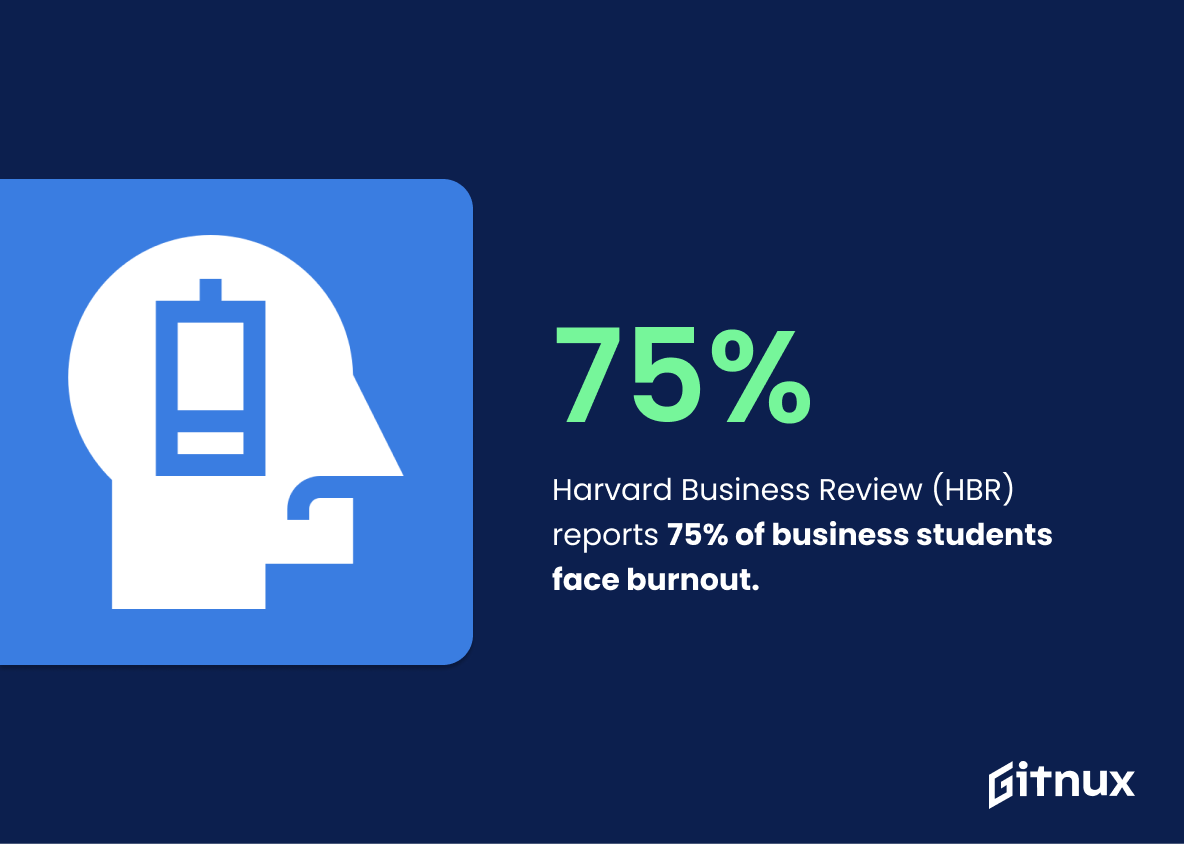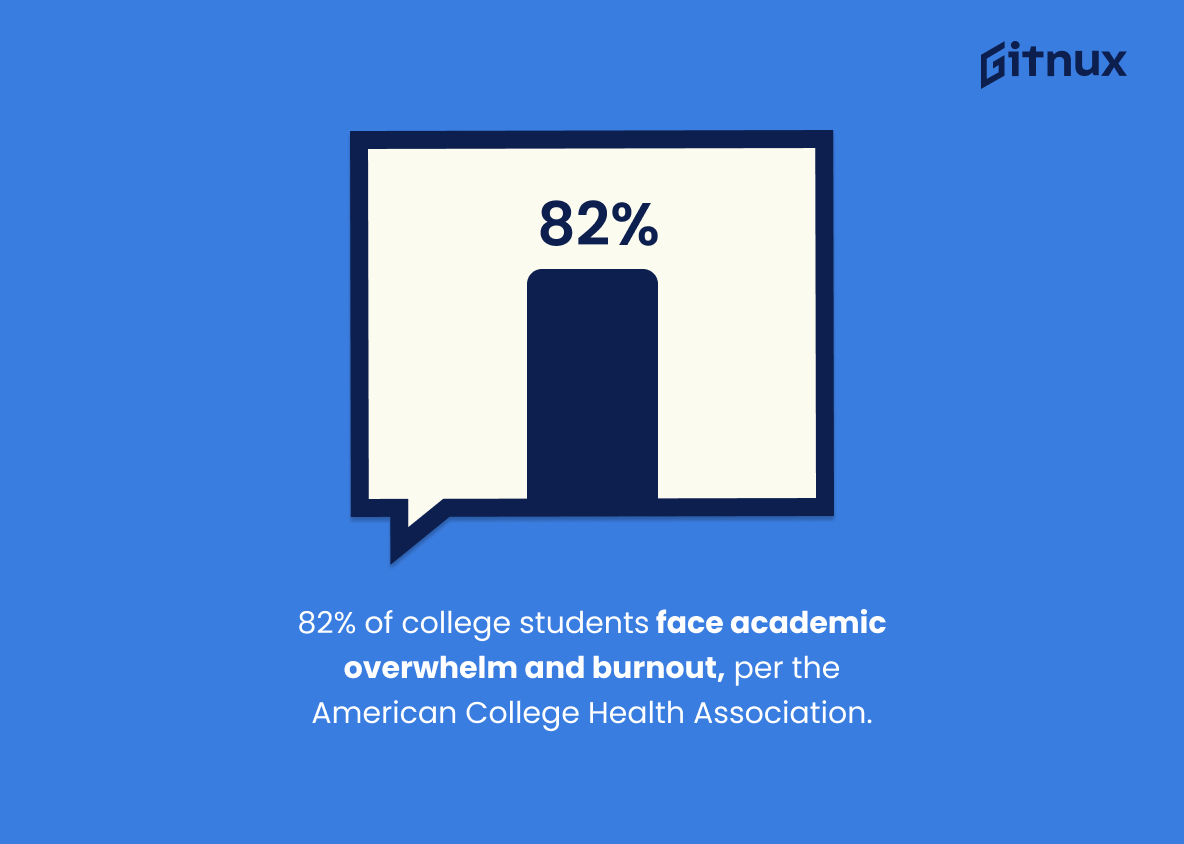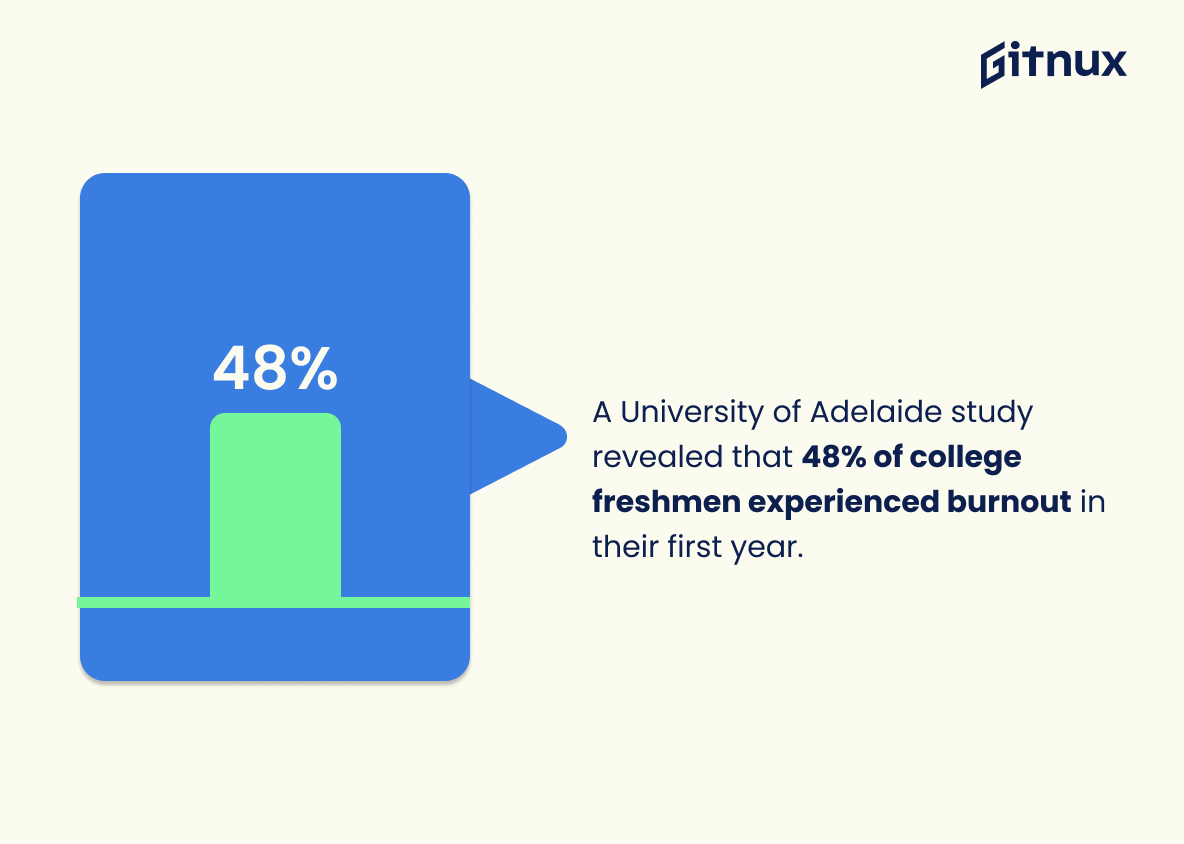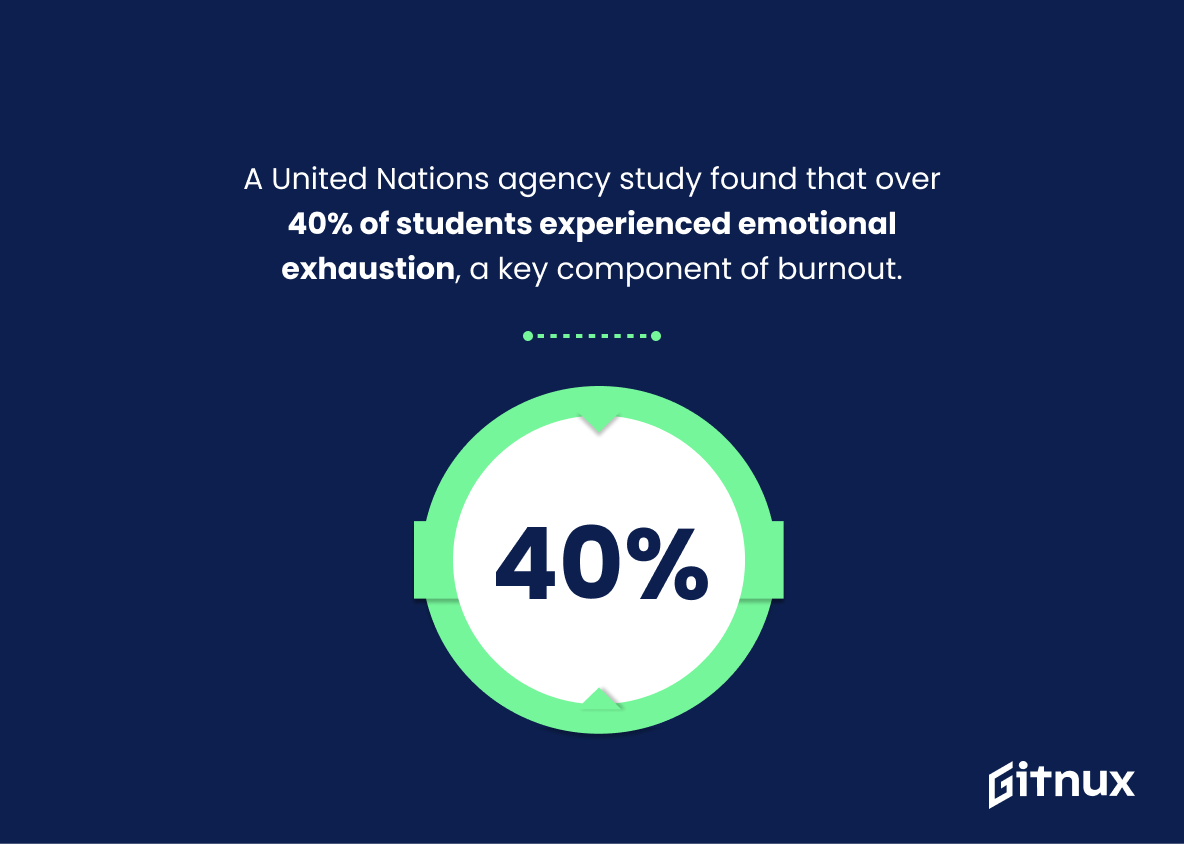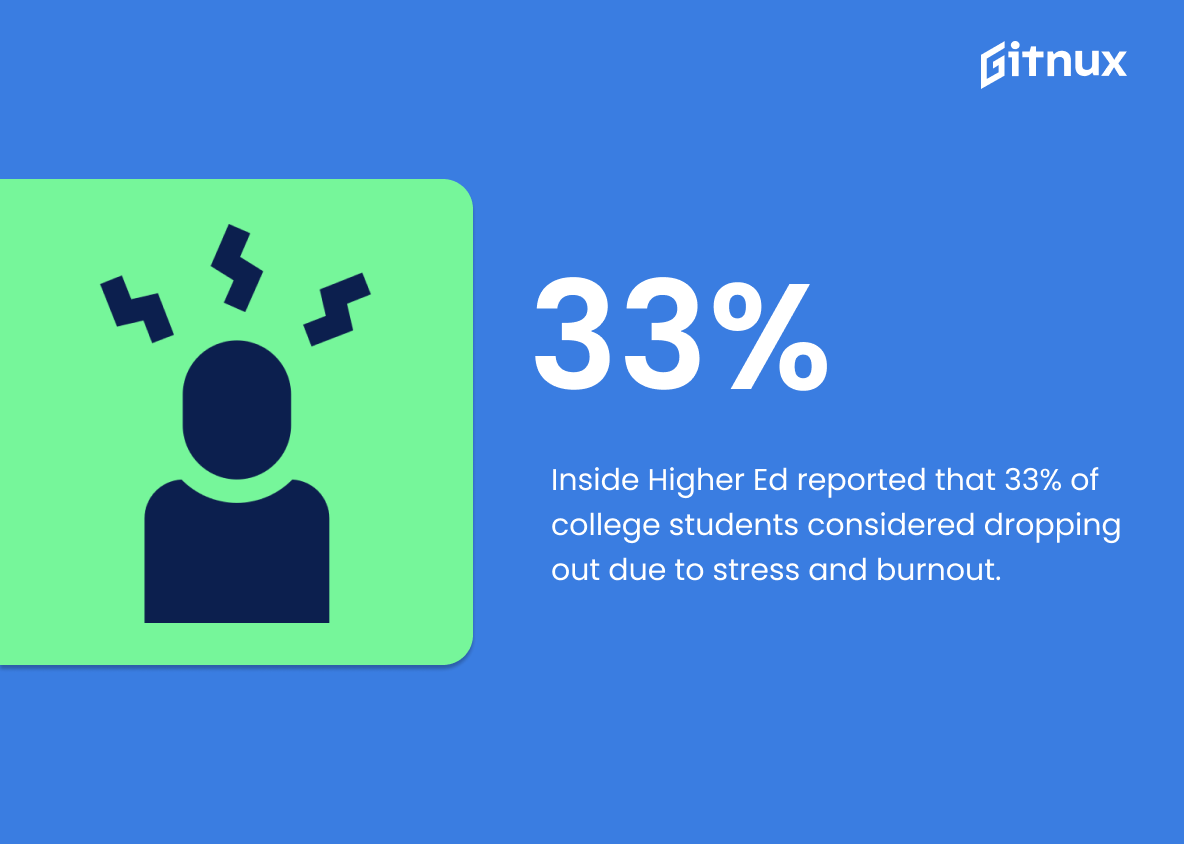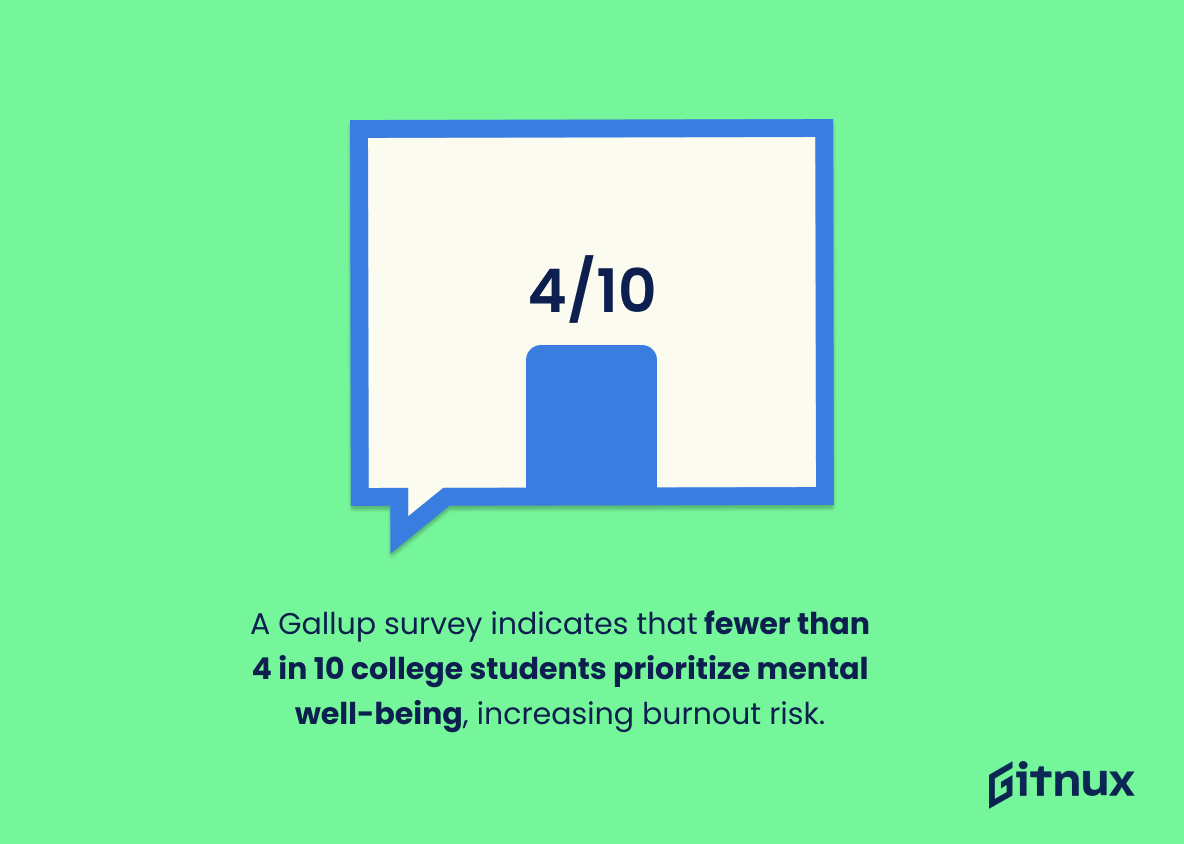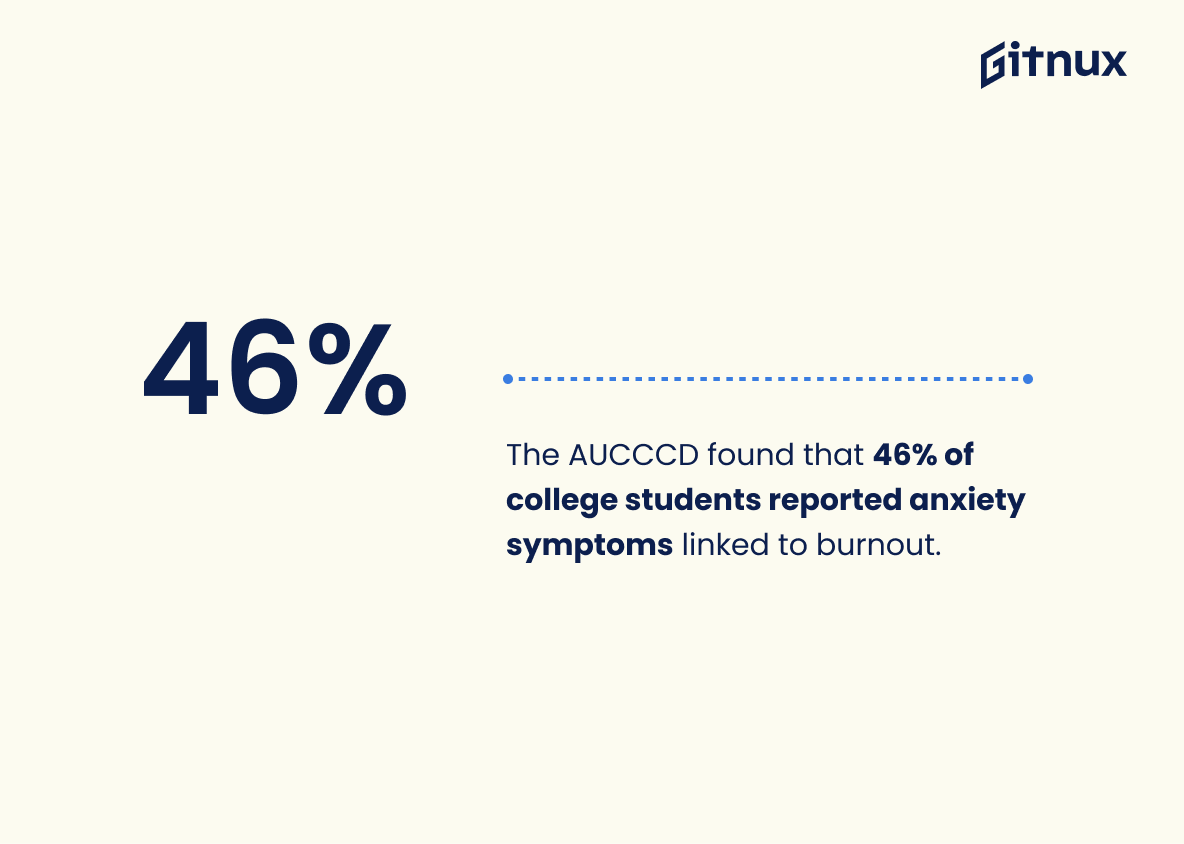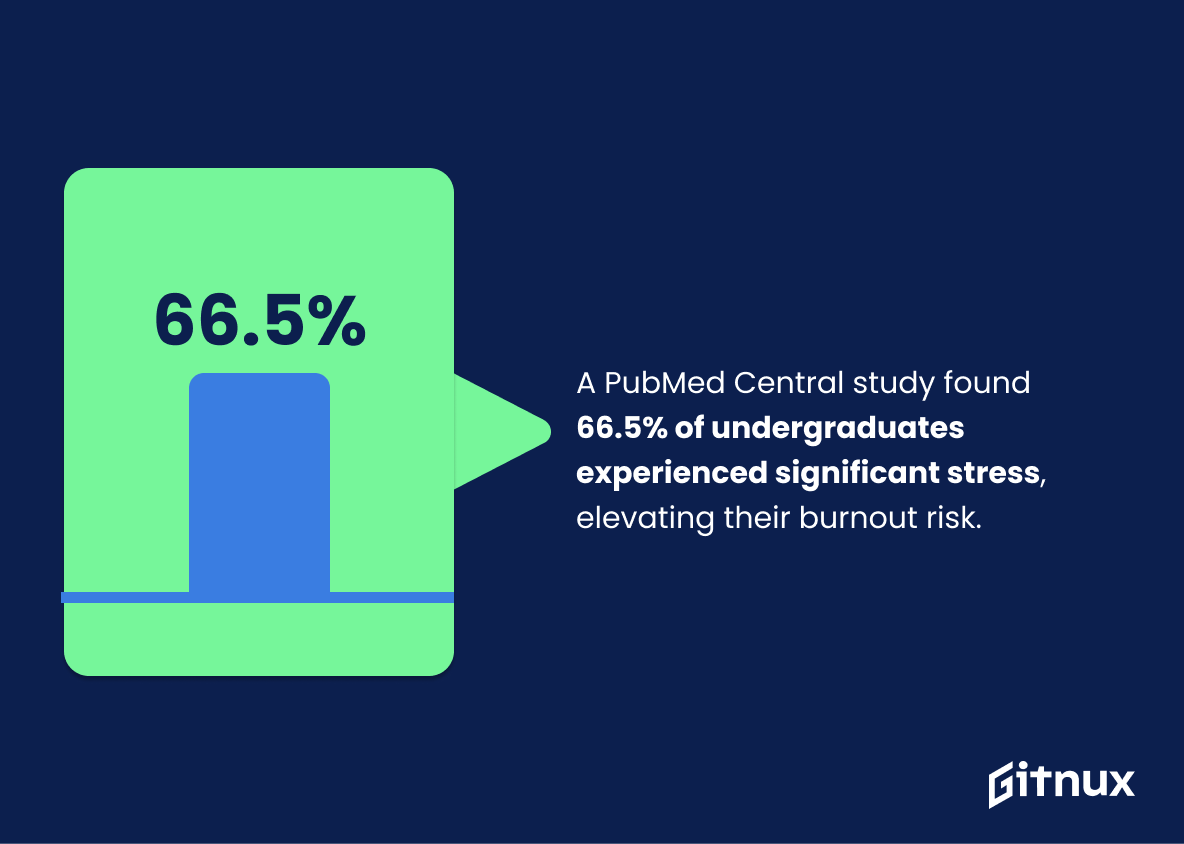College burnout is a growing problem among college students, with many studies showing alarming statistics. According to the University of North Carolina at Charlotte, 60.4% of students have experienced burnout. The American Psychological Association (APA) reports that around 70% of all college students feel depleted due to excessive stress. Harvard Business Review (HBR) states that 75% of enrolled business students struggle with a form of burnout and 82% report feeling overwhelmed during the academic year according to the American College Health Association. Frontiers in Psychology found 31.1 % experiencing moderate to severe levels while Jama Network reported 30%. A study from University Adelaide revealed 48%, Higher Learning Advocates 1 in 5, Psychology Today 13%, United Nations 40%, Inside Higher Ed 33%, Gallup 4 out 10 and National Sleep Foundation 60%. Additionally AUCCCD discovered 46 percent had symptoms anxiety; PubMed Central 66%; Wiley Online Library 54%; Springer 35%; Taylor & Francis 32; ScienceDirect 67/33 female-male ratio; and 64 percent difficulty finding meaning or purpose per Wiley Online Library research respectively on this topic.. This blog post will explore these statistics further as well as provide tips for managing college stress and avoiding burnout
This statistic is a stark reminder of the prevalence of college burnout among students. It highlights the need for universities to take proactive steps to address this issue and provide support for students who are struggling with burnout. It also serves as a warning to students to be mindful of their mental health and take steps to prevent burnout before it becomes a problem.
Around 70% of all college students feel depleted due to excessive stress, according to the American Psychological Association (APA).
This statistic is a stark reminder of the immense pressure college students face on a daily basis. It highlights the need for universities to provide more support and resources to help students cope with the stress of college life. It also serves as a warning to parents and educators to be aware of the signs of burnout and to take steps to prevent it.
College Burnout Statistics Overview
According to Harvard Business Review (HBR), 75% of enrolled business students struggle with a form of burnout.
This statistic is a stark reminder of the prevalence of burnout among business students. It highlights the need for universities to take proactive steps to address this issue and provide support for their students. It also serves as a warning to those considering enrolling in business school, that burnout is a real and serious problem that needs to be taken into account.
82% of college students report feeling overwhelmed during the academic year, contributing to burnout, says the American College Health Association.
This statistic is a powerful indicator of the prevalence of college burnout among students. It shows that the majority of college students are feeling overwhelmed and are at risk of burnout, highlighting the need for more resources and support to help them manage their stress.
31.1% of college students are experiencing moderate to severe burnout, according to a survey from Frontiers in Psychology.
This statistic is a stark reminder of the prevalence of college burnout among students. It highlights the need for greater awareness and understanding of the issue, as well as the need for more effective strategies to help students cope with the pressures of college life.
Research conducted by the University of Adelaide found that 48% of college freshmen experienced burnout at some point during their first year.
This statistic is a powerful indicator of the prevalence of college burnout among freshmen. It highlights the fact that nearly half of all college freshmen are struggling with burnout, a condition that can have serious consequences for their academic and personal lives. This statistic is a stark reminder of the importance of taking steps to prevent and manage college burnout.
A United Nations agency study found that over 40% of students experienced emotional exhaustion, a key component of burnout.
This statistic is a stark reminder of the prevalence of college burnout among students. It highlights the fact that emotional exhaustion is a major issue for many students, and that burnout is a real problem that needs to be addressed.
According to Inside Higher Ed, a study found that 33% of college students wanted to drop out due to stress and burnout.
This statistic is a stark reminder of the immense pressure college students face. It highlights the fact that a significant portion of college students are struggling with stress and burnout, and are considering dropping out as a result. This statistic is a powerful indicator of the need for more support and resources for college students to help them cope with the demands of college life.
A Gallup survey found that less than 4 in 10 college students feel strongly about their mental well-being, increasing the chances of experiencing burnout.
This statistic is a stark reminder of the prevalence of college burnout among students. It highlights the fact that a large portion of college students are not feeling mentally well, which increases their risk of experiencing burnout. This statistic serves as a call to action for universities, parents, and students to take steps to address the issue of college burnout.
The Association for University and College Counselling Center Directors (AUCCCD) found that 46% of college students reported symptoms of anxiety, an aspect related to burnout.
This statistic is a stark reminder of the prevalence of anxiety among college students, a key symptom of burnout. It highlights the need for universities and colleges to take proactive steps to address the issue of burnout and provide support for students who are struggling with anxiety.
A study in PubMed Central reported that 66.5% of undergraduate students experienced moderate to high levels of perceived stress, increasing their risk of burnout.
This statistic is a stark reminder of the prevalence of college burnout among undergraduate students. It highlights the fact that a large majority of students are at risk of burnout due to the high levels of stress they experience. This is an important issue that needs to be addressed in order to ensure that students are able to succeed in their studies and have a positive college experience.
According to Springer, 35.7% of university students report a high level of emotional exhaustion, increasing the likelihood of burnout.
This statistic is a stark reminder of the prevalence of college burnout among university students. It highlights the fact that a significant portion of the student population is struggling with emotional exhaustion, making them more vulnerable to burnout. This statistic serves as a call to action for universities to take steps to address this issue and provide support to their students.
A Taylor & Francis Online paper states that around 32.5% of nursing students experienced burnout during their studies.
This statistic is a powerful indicator of the prevalence of burnout among nursing students, highlighting the need for further research and support for those affected. It serves as a reminder that college burnout is a real issue that needs to be addressed, and that it is not something to be taken lightly.
Conclusion
Burnout is a serious issue among college students, with statistics showing that over 60% of them have experienced it. The American Psychological Association (APA) reports that around 70% of all college students feel depleted due to excessive stress, while Harvard Business Review (HBR) states that 75% of enrolled business students struggle with burnout. Additionally, the American College Health Association found 82% of college students report feeling overwhelmed during the academic year and Frontiers in Psychology reported 31.1 % experiencing moderate to severe burnout. Furthermore, Jama Network revealed 30% medical school student experience burnout leading to lower levels motivation; University Adelaide study showed 48%, freshmen experienced some form of burnouts at least once during their first year; Higher Learning Advocates survey indicated 1 in 5 college student has symptoms related to depersonalization or Burn out; 13.1 percent had diagnosis depression according Psychology Today article ; United Nations agency study concluded 40+ percent felt emotional exhaustion which can lead towards Burn Out and Inside Higher Ed research suggested 33 % wanted drop out due stress & Burn Out . Gallup Survey also stated less than 4/10th strongly about mental well-being increasing chances for developing Burn Out whereas National Sleep Foundation reported 60 % poor sleep quality contributing factor for development this condition . AUCCCD Study highlighted 46 % anxiety symptom associated with this problem , PubMed Central paper 66 + Percent undergraduate perceived high level Stress & Taylor Francis Online Paper 35+7 Percent university Students Emotional Exhaustion as well Wiley Library 54 Percent International Student Overwhelmed Feeling often leads towards same situation Science Direct Female 67 Male 33 Prevalence rate & 64 + 6 Difficulties finding meaning purpose Academic Work Factor Related To This Condition All these facts point toward one conclusion: College burnout is an increasingly common phenomenon amongst today’s youth and should be taken seriously by both educators and parents alike so they can help prevent its occurrence or provide support when needed
References
0. – https://www.ncbi.nlm.nih.gov
1. – https://www.tandfonline.com
2. – https://www.paloaltotherapy.com
3. – https://www.ilo.org
4. – https://www.hbr.org
5. – https://www.link.springer.com
6. – https://www.apa.org
7. – https://www.doi.org
8. – https://www.pubmed.ncbi.nlm.nih.gov
9. – https://www.insidehighered.com
10. – https://www.aucccd.org
11. – https://www.gallup.com
